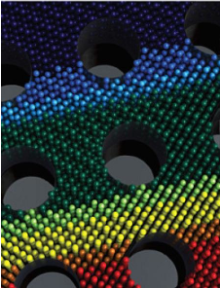HMC Physics Colloquium
Tuesdays at 16:30 in Shanahan Center for Teaching and Learning, Room B460
Slobodan Mitrovic
Caltech
Thermoelastic Phononic Metamaterials
Oct. 30, 2012
An independent control over electrical and thermal properties is one of the central goals in the search for efficient thermoelectric materials for waste heat energy conversion. A good thermoelectric will have high electrical, but low thermal conductivity. Nature, however, does not seem to favor this dissociation, and the best synthesized thermoelectrics in use today remain at about the same efficiency they had 50 years ago. In the past decade, nanostructuring offered the opportunity to engineer materials at length scales where heat conduction is affected much more than charge transport. Certain nanostructured thermoelectrics more than double the efficiency of commercial devices. Though this is a great leap for thermoelectrics, their efficiency still falls short of what is needed for a viable renewable energy technology. Further size reductions are not expected to give better results because the capacity of the material to convert heat becomes adversely affected. In fact, the attempts to lower thermal conductivity by increasing what is called incoherent phonon scattering mechanisms may have already given us their best.
In this lecture I will show that nanostructures can also enable so-called coherent control of heat transport. These silicon nanophononic metamaterials, which are thin films patterned into a regular array of holes approximately 20 nm in diameter and 20 nm apart, harness the wave nature of heat transport and essentially create an entirely different material than silicon could ever be on its own. This ‘designer’ material comes very close to the ideal of a perfect thermoelectric and opens and shows how we can manipulate materials at a fundamental level to achieve desirable properties.



